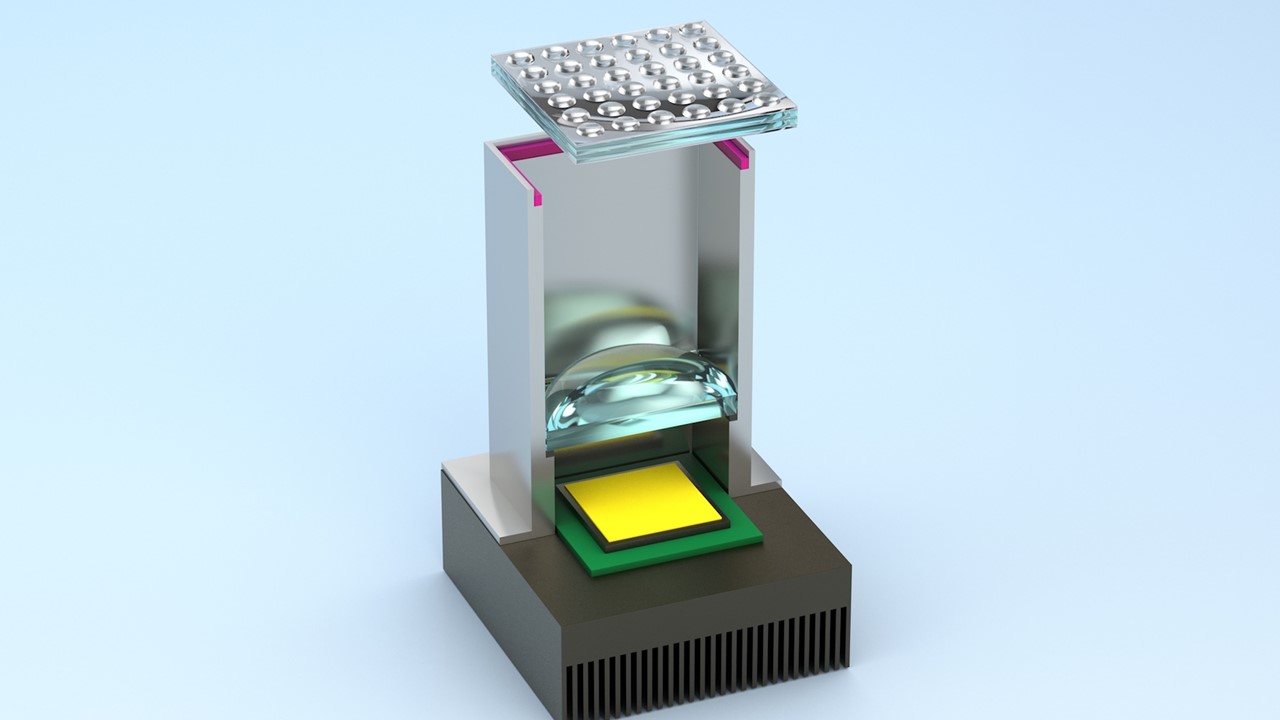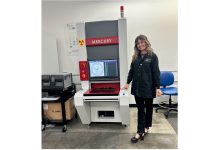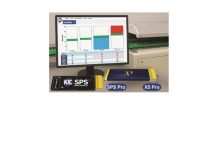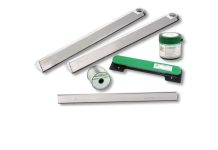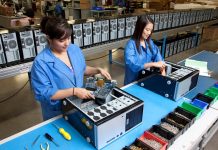DELO has developed a new adhesive for automotive lighting applications. DELO PHOTOBOND OB4189 is resistant to yellowing and, with its high aspect ratio, is particularly suitable for bonding microlens arrays, such as those found in headlights and projection systems.
These days, light is considered among the most important elements of automotive design and differentiation. Microlens arrays are a key player in these developments. They project LED light, which sits behind a very short focal length, providing sharp images and individual geometries. These systems are increasingly being used as optics in headlights and projection systems due to their low required installation depth.
For increased efficiency, such microlenses are often made of optically pure polymers, in other words, adhesives. The microlens arrays are then fixed to a housing. With a high viscosity of 75,000 mPa·s, DELO PHOTOBOND OB4189 enables a high enough aspect ratio for the bonding process. The adhesive thus retains its shape after dispensing and does not flow, which is important for bonding microlens arrays. It is also extremely resistant to yellowing, as shown by life cycle simulations of 500 hours at 140 °C. This is essential for such optically demanding applications.
The modified acrylate is solvent-free and developed for a temperature application range of -40 °C to +120 °C. It has a compressive shear strength of 30 MPa on polycarbonate and 25 MPa on PMMA. It can be cured with UV light (365 nm) and visible light (400 nm). The typical exposure time at 400 nm with a layer thickness of 100 μm is 5 seconds. This enables high-precision active alignment processes for optical components and low cycle times in automated production.
“With DELO PHOTOBOND OB4189, we added a high-viscosity and extremely yellowing-resistant product to our portfolio of temperature and humidity-resistant active alignment adhesives that is precisely tailored to the requirements of microlens arrays,” explains Christoph Appel, Product Manager – LED (Automotive) at DELO.
More information on adhesives for automotive lighting will be given at an upcoming webinar on September 12. There, experts will discuss how adhesives can replace soldering applications, how to precisely align optical components, and how more efficient manufacturing processes can be realized with different adhesive chemistries.
For more information, visit www.delo-adhesives.com/en/.


